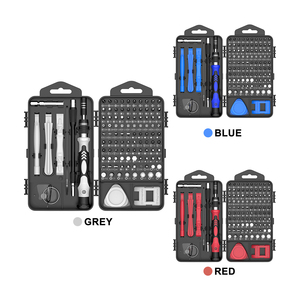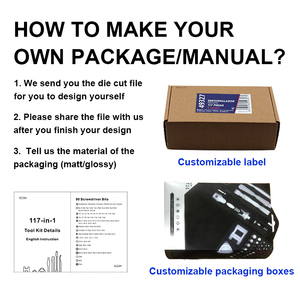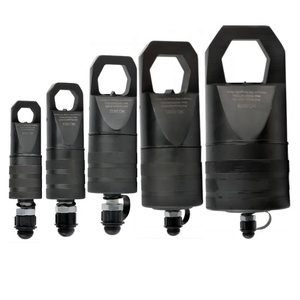
All categories
Featured selections
Trade Assurance
Buyer Central
Help Center
Get the app
Become a supplier

(7441 products available)





































There are several types of screw cutter tools based on the complexity of the screw, the material used, and the function of the tool.
Manual screw cutter
If the size of screws required is small, a manually operated screw cutter can be used. It is small, compact, and easy to use. This tool is ideal for small jobs, and it doesn't rely on electricity. The usage is simple - one has to clamp the material and turn the cutting die manually over the material to make desired threads. However, this is not very efficient for large tasks.
Automatic screw cutter
Automatic screw cutters are designed to carry out the cutting automatically after setting the required thread size. It can be a press or a CNC machine. These machines save manpower and time and are ideal for mass production. Large material sizes can be machined in a short time. However, it has very high initial costs and requires substantial space for installation. Also, operations must be carefully monitored to avoid damage to the tool or materials.
CNC screw cutter
CNC screw cutters use computer numerical control for high precision cutting. They are more flexible in that they can be programmed to produce different screw sizes. The precision of cutting using CNC screw cutters is very high. Large production runs can be carried out without replacing the tool. One has to bear the high cost of the machine and the need for computer programming knowledge to operate the tool properly. Also, regular maintenance of the tool is important for achieving the desired accuracy all the time.
Bench screw cutter
A bench screw cutter is larger and more solid. It is suitable for heavy-duty operations. The handler has to place the material and turn the handle to make the threads. It works well for people who conduct a lot of screw cutting in workshops. Bench cutters can last longer due to their sturdy construction. They are not suitable for small-cutting jobs. Also, these tools are expensive compared to manual screw cutters because of their large size and construction strength.
Hydraulic screw cutter
Hydraulic screw cutters use hydraulic systems to help them cut screws. They can give high power and high precision. The clamps are used to hold the material tightly, and hydraulic dies are used to cut the material into desired shapes. There is an increased cutting force without increasing vibrations. High productivity can be achieved. One has to bear the cost of a hydraulic system that comes with high costs and requires regular checks. A hydraulic fluid also has to be maintained well in order for the system to achieve the desired cutting force.
Material quality
Strong materials like steel or alloys are used to make screw cutting tools. These materials are very hard and withstand all forces when cutting. This is because hard materials resist wear and tear when used. Also, harder materials maintain their shape even after extended use. Therefore, tools made of these materials last longer and stay sharp, allowing them to cut accurately for a longer time.
Heat treatment
Heat treatment like quenching and tempering increases the hardness of the tool material. The tool is first heated and then rapidly cooled in water or oil. This increases the hardness and strengthens the bonds inside the material. After this, it is tempered by heating it slowly. This makes it tough by reducing brittleness and making it less likely to break. Hard tools survive longer under extreme conditions and keep cutting well.
Toughness
Screw cutter tools are designed to be very tough so that they don't chip or break easily when subjected to impact or bending forces. Materials like alloy steel are used that can absorb energy without failing. The toughness is important in situations where the tool might be dropped, used in hardened materials, or subjected to unexpected force. Tough tools will continue to function properly even after undergoing many difficult uses.
Corrosion resistance
Corrosion resistance is another factor that affects the durability of screw cutters. Stainless steel or materials with good corrosion resistance are used to prevent rusting when the tool comes in contact with moisture. Corrosion weakens the material and can lead to tool failure. Corrosion-resistant tools last longer and work properly in wet environments.
Edge retention
Edge retention is the ability of the tool to maintain a sharp cutting edge over time. High-quality screw cutter materials such as high-speed steel are used, making them able to resist wear. The cutting edge has to slide over the material being cut, which leads to wear. Materials that resist wear will not cause the edge to become dull. This way, the tool will cut well even after repeated uses, which contributes to its durability.
Manufacturing industry
Screw cutters are used to make screws in large-scale production. For the screw to be made, the screw cutter will cut threads on its shaft. This allows screws to be used to assemble other products of a manufacturer like cars, machines, etc. Accurate screws make products work well. So, screw cutters are very important to manufacturers who make many screws quickly and efficiently. They need tools to handle high volumes with precision. That's why they use automatic and CNC cutters.
Construction field
Screw cutters are widely used in construction to cut and thread bolts, rods, and other fasteners. This helps to join different parts together for structures like buildings, bridges, etc. Construction requires screws and bolts in varying sizes. Hence, screw cutters also give the flexibility to produce custom ones. Manual cutters work just fine as they are used for small construction projects. Just like in large construction projects, hydraulic and automatic screw cutters are best used.
Repairs and maintenance
Benchtop screw cutters are a must-have for anyone carrying out tool repairs. Such a cutter will allow replacing damaged screws or making custom screws for older machines. This is especially useful in maintenance activities where screws have to be replaced frequently. Portable screw cutters are convenient to have, as they are used on the job site or even inside vehicles. They don't take a lot of space and are small.
Aerospace and defense
Screw cutters are used to make high-strength, lightweight screws. The screw cutter tool ensures that screws meet the performance requirements of these critical applications. Screw cutters are thus essential in aerospace and defense to meet these demands for quality and precision with no compromise.
DIY and crafts
Further, screw cutters are used in the model-making, woodworking, and crafting fields to make screws and bolts of various sizes. In such smaller applications, manually operated cutters are used, as they are sufficient. Therefore, screw cutter tools are very versatile and can be used in many different fields.
Material of the cutting tool
The main consideration is the material of the screw cutter. To chop hard metallic screws, a cutter should be made from harder material than the screw. Common materials for screw cutters are steel alloys, carbide. These materials resist wear and will thus remain sharp for a long time. This is important since a worn-out cutter will produce poor-quality threads.
Size of the cutter
The size of the screw cutter should correspond to the size of the screws one intends to cut. Screw cutters have different diameters and come with adjustable holes to cater to screw sizes. When putting the cutter around the screw, it should fit well, leaving no space. A cutter that is too large will not produce neat threads. On the other hand, a cutter that is too small will require too much force. Both of these result in a poorly cut screw.
Type of the cutter
There are manual and automatic screw cutters. One has to do the cutting manually with a manual screw cutter. Hence, it is ideal for small jobs or cutting a small number of screws. Automatic screw cutters do the job of cutting automatically. They are suitable for mass cutting. Automatic cutters have to be powered either by batteries or electricity. In terms of usage, a [p] screw cutter table can support the [p] screw cutter for a smooth operation as it carries the tool and screw in a balanced way.
Portability
If the plan is to cut screws at a fixed place, portability is not really a big issue. This allows a larger cutter with more stable operations. If the plan involves using the cutter in different locations, portability becomes an important consideration. This eliminates having to carry heavy tools around, as one can conveniently have a small and lightweight tool.
Budget
Budget is an important factor in choosing a [p] screw cutter. Manual screw cutters are relatively cheaper. An electric or hydraulic screw cutter comes more expensive, though automatic cutters add up quickly. Regardless of the type, a cutter should be of good quality because poor-quality tools lead to poor-quality work. This saves money in the long run by reducing the need to purchase a replacement or something bigger later on.
A1: Screw cutters are usually made from steel or steel alloys. This is because these materials are hard enough to cut through other metals. They also stay sharp for a long time. Sometimes, they are coated with other materials to make them last even longer. All this allows them to be used for cutting screws effectively.
A2: A screw cutter tool is used to cut screws. Manually operated, hydraulic, electrical, and CNC cutter types exist, depending on the job's complexity and volume. For small jobs, a manual or portable cutter works well. However, huge projects demand hydraulic or CNC cutters for speed and accuracy. Automated cutters are best for large-scale production. The cutter's strength ensures it can handle tough materials like steel. It makes precise cuts to keep screws effective for their tasks.
A3: To cut screws to length, a screw cutting tool is used. This tool clamps the screw in place and uses a die to match the screw threads as it cuts. The die area is adjusted to the desired length so that a sharp-cut screw will be produced. Some tools also have markings listing common screw lengths, making the job easier.
A4: A screw cutting machine turns the workpiece to achieve the required thread shape with a cutting tool. The tool is fixed at an angle and slides in to cut while rotating the workpiece. The tool feeds in gradually to cut the full thread depth as the workpiece turns completely.